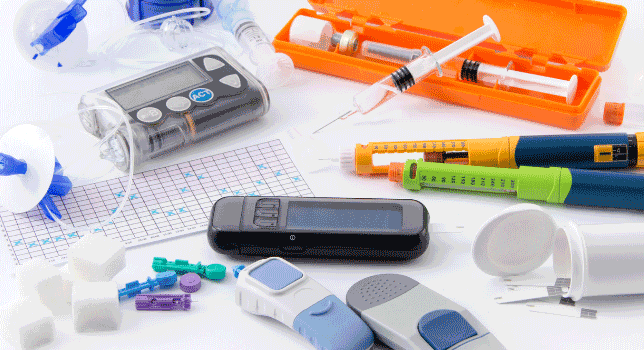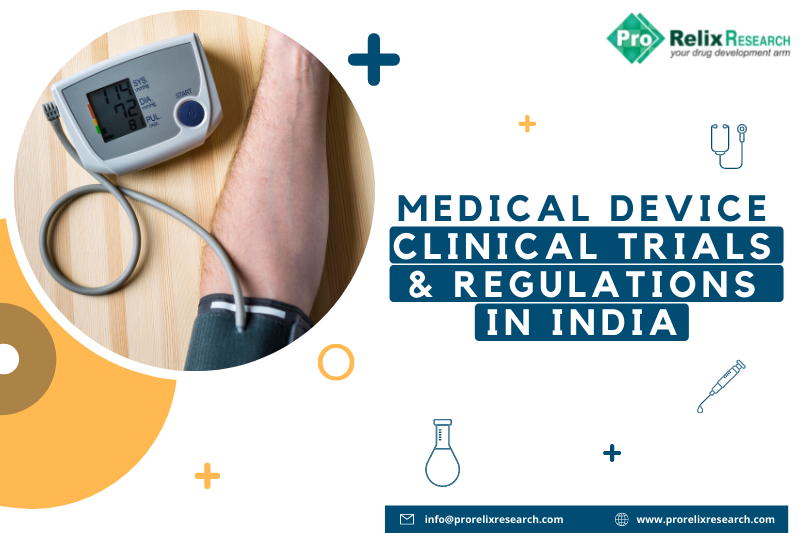Medical device clinical trials & regulations in India

India has been a country that the west and the east were keenly looking at for a long time for the conduct of clinical trials. A sleuth of reactive responses to judiciary and civil society brought out notifications, circulars and orders resulting in the downfall of clinical trial approvals, with a peak of 500 approvals in 2010. Realization though slow, has led to reframing the Drugs and Cosmetics Rules leading to Medical Devices Rules, 2017 effective from January 1, 2018, for medical devices, including in vitro diagnostic kits; New Drugs and Clinical Trials Rules, 2019 effective from March 19, 2019; and draft Cosmetics Rules, 2018 issued for public opinion on November 29, 2018.[1]
The Indian law that regulates the quality and safety of medical devices has been amended and it will now apply to all medical devices, effective April 1, 2020. Prior to the amendment, only 37 categories of medical devices were regulated or were notified to be regulated in near future in India.
The immediate consequence of the amendment in law is as follows:
Before October 1, 2021, all presently unregulated medical devices will have to be registered by respective importers or manufacturers with the Drugs Controller General of India. However, those medical devices which are already regulated or have been notified to be regulated are exempted from the requirement of registration
Before August 11, 2022, importers, manufacturers, distributors, whole sellers and retailers of presently unregulated Class A (low-risk) and Class B (low-medium risk) medical devices sold in India will have to compulsorily obtain a license.
Before August 11, 2023, importers and manufacturers, distributors, whole sellers and retailers of presently unregulated Class C (medium-high risk) and Class D (high risk) medical devices sold in India will have to compulsorily obtain a license.
In order to obtain registration for medical devices, the importers and manufacturers of the medical devices have to be certified as compliant with ISO-13485 (Medical Devices – Quality Management Systems – Requirements for Regulatory Purposes).
On February 11, 2020, the Government of India gazetted two notifications – a new definition of medical devices and The Medical Devices (Amendment) Rules, 2020. The cumulative effect of these two notifications is that all medical devices will be brought under the fold of quality and safety regulation from the effective date of both notifications – April 1, 2020.
India’s medical device quality regulation
The standards of quality and safety of medical devices are regulated in India by a law called The Drugs and Cosmetics Act, 1940 (“DCA”). The scope of DCA is restricted to only those medical devices which are notified by the Government from time to time as “drugs” (commonly referred to as “notified medical devices”).
The Medical Devices Rules, 2017 (“MDR”) have been framed under DCA. These rules lay down comprehensive quality requirements to be followed by marketers/importers/manufacturers/sellers of notified medical devices.
The way DCA and MDR ensure the quality and safety of notified medical devices at all levels of the supply chain is by enforcing a mandatory license requirement. All importers/manufacturers/sellers of notified medical devices must obtain a license from the appropriate licensing authority before undertaking any commerce in notified medical devices. A license is issued only after quality checks. The license holder’s business premise is subject to periodic inspection. A license holder is also required to maintain detailed records of the sale-purchase undertaken in relation to notified medical devices and ensure traceability in the event of a quality or safety-related failure or complaint.
The Medical Device (Amendment) Rules, 2020
On February 11, 2020, the government also notified The Medical Device (Amendment) Rules, 2020 (“MDR Amendment”). The MDR Amendment introduces two changes to MDR. The first is the introduction of a new chapter for registration of Newly Notified Medical Devices by their respective manufacturers and importers. The second is an exemption for the 37 categories of already regulated or notified medical devices from the requirement of registration introduced by the new chapter.
Requirement of registration
The manufacturers or importers of Newly Notified Medical Devices will be required to compulsorily register their medical devices with the Drugs Controller General of India (“DCGI”) before October 1, 2021. The DCGI will start accepting applications for registration through a dedicated online portal called “Online System for Medical Devices” from April 1, 2020 (or from such later date by when the online portal to ready to accept applications). There is no time frame prescribed as of now for processing the application for registration by DCGI. It appears that the registration will be done instantly after submission of all information and documents on the online portal i.e., without any examination of the information and documents submitted by the applicant at the hands of DCGI.
The registration process is relatively simpler and should not be equated to a full-fledged marketing registration or authorization. Any importer or manufacturer of Newly Notified Medical Device will be able to obtain registration on the submission of the following information:
- Name of the company or firm or any other entity
- Name and address of manufacturing site (for devices manufactured in India only)
- Specification and standards of medical device (for imported devices only)
- Details of medical devices (Generic Name, Model No., Intended Use, Class of Medical Device, Material of Construction, Dimensions (if applicable), Shelf Life, Sterile or Non-sterile status, Brand name only if registered under India’s trademark law)
- Certificate of compliance with respect to ISO 13485 standard accredited by National Accreditation Board for Certification Bodies or International Accreditation Forum in respect of such medical device
- Free sale certificate from country of origin (for imported devices only)
- A duly signed undertaking stating that the information furnished by the applicant is true and authentic
- The registration will be complete only upon generation of a registration number.
- Consequences of non-registration or of not obtaining a license before the deadline
If an importer or manufacturer of a Newly Notified Medical Device fails to obtain a registration until October 1, 2021, then it will have to cease import or manufacture of said medical device until such time the registration is obtained. It will be easy for the DCGI or State-level Licensing Authority to know whether a medical device is manufactured or imported without registration. Under the Legal Metrology (Packaged Commodity) Rules, 2011, every importer and manufacturer of any medical device (whether regulated or unregulated) is required to declare the date of import of medical device or date of manufacture of medical device on its label. Therefore, if a declaration exists on the label of a medical device that the medical device has been imported or manufactured on or after October 1, 2021, but the label does not show a DCGI registration number, then it will be confiscated by DCGI or appropriate State-level Licensing Authorities and action will be taken against the importer or manufacturer.
Any violation of MDR including failure to obtain registration or license before the stipulated deadline may result in criminal prosecution resulting in imprisonment and fine. Any stock of medical devices that is sold without registration or license could also be confiscated.[3]
Clinical Trials for Medical Devices:
As per the National Ethical Guidelines, “a medical device is a medical tool which does not achieve its primary intended action in or on the human body by pharmacological, immunological, or metabolic means but which may be assisted in its intended function by such means”.
It may be an instrument, apparatus, appliance, implant, material or other article, whether used alone or in combination, including software or an accessory, intended by its manufacturer to be used especially for human beings or animals for one or more of the specific purposes of:
- Detection, diagnosis, prevention, monitoring;
- Treatment or alleviation of any physiological condition or state of health, or illness;
- Replacement or modification or support of the anatomy or congenital deformity;
- Supporting or sustaining life;
- Disinfection of medical devices; or
- Control of conception.
Medical devices, IVD’s are classified in the following manner, according to the risks involved:
| Class | Level of Risk | Medical Devices | IVD’s |
| A | Low | Thermometers / bandages / tongue depressors | Reagent |
| B | Low – Moderate | Hypodermic needles/suction equipment | IVD’s intended to be used to obtain test results that are not for the determination of a medically critical status |
| C | Moderate-high | Lung ventilator/bone fixation plate | IVD’s intended for use in detecting the presence of, or exposure to, a sexually transmitted agent; detecting the presence in cerebrospinal fluid or blood of an infectious agent with a risk of limited propagation; or an erroneous result that will cause death or severe disability to the individual or fetus; prenatal screening of women for Rubella or Toxoplasmosis |
| D | High | Heart valves / implantable defibrillator | IVD’s intended to be used for detecting the presence of, or exposure to, a transmissible agent present is in blood, blood component, blood derivative, cell, tissue or checking for suitability of organ transfusion or transplantation |
Clinical Investigation of Medical Devices:
Application to conduct a clinical investigation for investigation medical device is to be made to the CLA (CDSCO) via Form MD-22, by a sponsor, along with the information specified in the Seventh Schedule (page 202). The CLA grants the permission to conduct a clinical investigation for an investigational medical device via Form MD-23 (Rule 52 of the Medical Devices Rules, 2017)
The fee for application to conduct a pilot or pivotal clinical investigation is INR 100,000 and to conduct clinical performance evaluation is INR 25,000. Per rule 51(2), no fee shall be payable by any institute, organization, hospital-run or funded by Central or State Government for the conduct of a clinical investigation.
| Central Licensing Authority | State Licensing Authority |
| The CLA, i.e., CDSCO is responsible for enforcing the Medical Devices Rules, 2017 for: i. Import of all classes of medical devices. ii. Manufacture of classes C and D iii. Clinical investigation and approval of investigational medical devices iv. Clinical performance evaluation and approval of new in vitro diagnostic medical devices v. Coordination with State Licensing Authorities. | The State Drugs Controller is the State Licensing Authority responsible for enforcing the Medical Devices Rules, 2017 for: i. Manufacture for sale or distribution of Class A or B medical devices ii. Sale, stock or exhibit or offer for sale or distribution of medical devices of all classes. |
For Clinical investigation of an investigational medical device, one must:

- Obtain approval from the CLA.
- Obtain approval from a registered ethics committee.
- Register the trial with the Clinical Trials Registry of India (CTRI), prospectively.
- Comply with The Medical Devices Rules, 2017published by the CDSCO, Good Clinical Practice Guidelines, published by the CDSCO, ethical principles described in the National Ethical Guidelines for Biomedical and Health Research Involving Human Participants, 2017 published by the ICMR.
- The enrollment of participants in the clinical investigation must begin within a year of obtaining approval from the CLA. Prior permission must be obtained from the CLA, if the applicant is not able to initiate enrollment within the prescribed timeframe.
Clinical Performance Evaluation of New In Vitro Diagnostic Medical Devices:
Application to conduct a clinical performance evaluation of new in vitro diagnostic medical device is to be made to the CLA via Form MD-24, by the sponsor, along with the applicable fee (specified in the Second Schedule) and information (specified in sub-rule 2 of Rule 59, page 159). If all requirements are satisfactorily met, the CLA grants permission to conduct clinical performance evaluation of new in vitro diagnostic medical device via Form MD-25.
The approval process for applications received online via the SUGAM portal with respect to medical devices can be accessed here. The Online System for Medical Devices launched by CDSCO allows an applicant to submit and track the status of applications pertaining to medical devices.[2]
National accreditation body
National Accreditation Board for Certification Bodies (NABCB) under the Quality Council of India set up by the Ministry of Commerce and Industry, Government of India act as the national accreditation body for the purposes of accrediting Notified Bodies.
NAB lays down the conformity assessment activities for accreditation of Notified Bodies and standards for such accreditation; prepare norms and procedures for accreditation of Notified Body, and audit a Notified Body periodically for assessing conformance with the Medical Devices Rules.
Notified body
For a fee, the Notified Body accredited by the NAB audit the manufacturing sites to verify conformance with the Quality Management System and other applicable standards as specified in the rules. For now, Intertek India, TUV Rhein land (Delhi), and TUV Sud South Asia (Mumbai) are the Notified Bodies registered for the purpose.
Test license to manufacture for the purpose of clinical investigation/ performance evaluation, examination, demonstration or training
Application shall be made in Form MD-12 for the manufacture in small quantities for the purpose of clinical investigation/ performance evaluation, examination, demonstration or training. The fee for Test License is INR 500.
Import of medical devices
An authorized agent in India having license to manufacture or wholesale license for sale or distribution for sale or distribution shall make an application for grant of import license to CDSCO through online portal in Form MD-14. For import or manufacture of medical device which does not have predicate medical device, an application for grant of permission for such medical device after completion of its clinical investigation under Chapter VII shall be made to the CLA in Form MD-26 either by an authorized agent in case of import or the manufacturer.
An application for grant of permission to import or manufacture a new IVD may be made in Form MD-28 either by an authorized agent in case of import or the manufacturer.
The fee for import of class A medical device per site is USD 1000 and USD 50 per product; for class B per site is USD 2000 and USD 1000 per product, and for class C or D per site is USD 3000 and USD 1500 per product.
The fee for import of class A or B IVD per site is USD 1000 and USD 10 per distinct product, and for class c or D per site is USD 3000 and USD 500 per distinct product.
Fee for import license for test, evaluation, demonstration or training for each distinct medical device is USD 100.
The fee (and renewal) for manufacturing of class A or B medical device per site is INR 5000 and INR 500 per product, and for class C or D per site is INR 50,000 and INR 1000 per product.
The fee for permission to import or manufacture a medical device that does not have its predicate device is INR 50,000 and IVD is INR 25,000.
Post-Marketing
The permission holder of Form MD-27 shall inform the date of launch of a medical device in the market to the CLA and shall submit Periodic Safety Update Report from the date of launch in the market and such report shall be submitted every six months for first two years followed by submission of the said report annually for the two more successive years. [1]
The expansion of the definition of medical devices and the requirement to obtain registration for medical devices should not come as a surprise because the Government had published a draft of these notifications in October 2019. It was covered extensively at the time, including by us.
In our view, the notification of the new (and comprehensive) definition of medical device has brought finality to the issue of regulation of all medical devices that has haunted the government and Indian consumers for a long time. The Government has now given sufficient time for the industry to adopt ISO 13485 and obtain registration for hitherto unregulated medical devices. Now, the onus is on the industry to do its part and reinforce the belief of the Indian consumer and the international community in the quality and safety of medical devices sold in India.[3]
Read More:
Clinical Trial Regulations in the United States






